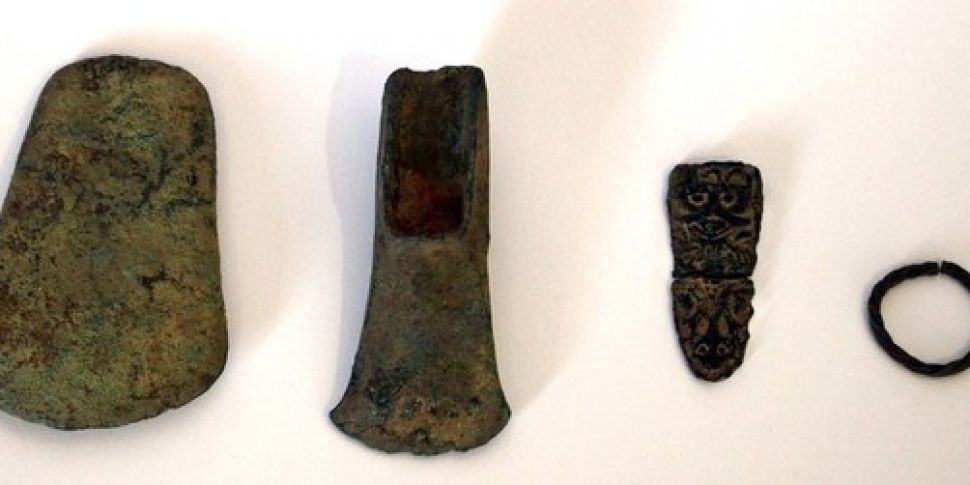Researchers at the National Museum are currently investigating four ancient Irish artefacts, but the curious thing about them is they have no idea where they came from – having arrived anonymously in the post last Thursday in two small padded envelopes.
No stamp, no postmark, no message, no number, no note, no letter – and it’s fast becoming one of the greatest treasure hunts in Irish history.
The four objects have left archaeologists scratching their heads, as they represent a mishmash of Irish history. Dating from four different time periods, the oldest one (an axe head) comes from the early Bronze Age, dating back 4,000 years. A second axe head, known as a palstave, is roughly 500 years younger, while the third object leaps forward in time to the 10th Century AD – it’s an ornately carved strap tag, a clothing accessory of typical Scandinavian Viking style, the first kind ever to be found in this style on this island. The final piece is a ring, which is proving hard to date.
“They were handed to me in my office as soon as I came in,” Mary Cahill, Keeper of Antiquities at the Kildare St facility, told Newstalk’s Sean Moncrieff today. “People do leave things at the front desk from time to time, even over the weekend when the archaeological staff is not there. But always they would leave a name or a number. But on this occasion, there is no clue where these objects are from or from whom, and this is why we are trying to make contact with that person because there is a lot of archaeological information that we would really like to get about these objects.”

This Scandinavian Vikin dress tab is of particular interest to the National Museum, as they know it was not made in Ireland
The four objects have very little in common, although three of them are made of copper or copper alloy. The ring is a white metal alloy, the museum believes, though it has yet to be analysed. The disparity of the four is the only clue the researchers have to work with, which suggests that they were perhaps not all found together.
“They couldn’t have been found together. If they were... well, then there is something fundamentally wrong with how we understand our history,” Cahill said.
Cahill praised the anonymous donor of the rare objects for not interfering with them, describing their condition as good. “These have not been interfered with at all, there is evidence of soil on them, for example,” she added.
While Viking relics are not uncommon in Ireland, the most frequent examples represent the culture of Hiberno Vikings. Scandinavian Viking objects do turn up from time to time, but mostly in excavations.
“It’s rare enough for an individual chance find of this type to be made,” Cahill explained. “People who are involved in any kind of agricultural activity, drainage works, turf cutting... even gardening, they always have the possibility of finding an archaeological object. But to find something like this is quite unusual.”
Asking was it likely that a history enthusiast chanced upon the objects with a metal detector, Cahill said it was.”Metal detecting is a difficult subject,” she explained. “Irish archaeology is very much protected by the National Monuments legislation, and that has been the case since 1930. So even people like me, professional archaeologist all my life, I have to be licensed to excavate, I have to be licensed to use a metal detector.
“Those people who go digging... they are in, let’s put it this way, an ‘irregular situation’.”
Reaching out to the individual who handed them in, Cahill thanked the person for recognising their value and doing the right thing with them. But now the person needs to do the “next right thing,” to contact the museum and let them know where they came from.
“If the person is feeling a little bit nervous, then call the National Museum, ask for Mary Cahill, and I will talk to them. I will go meet them, if necessary. We have done this so many times with so many people from all around the country. I don’t even mind the odd wild goose chase if we get a cup of tea at the end of it!” she added.
Anyone with information relating to the artefacts is requested to call the National Museum on (01) 6 777 444.
Listen back to Mary Cahill, Keeper of the Irish Antiquities at the National Museum, speaking to Sean Moncrieff:









